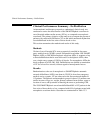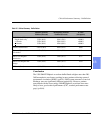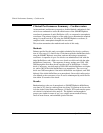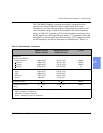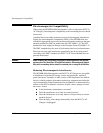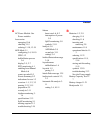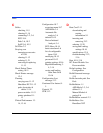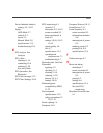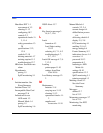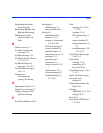
Electromagnetic Compatibility
13-22 Specifications & Safety
Electromagnetic Compatibility
When using the M3500B defibrillator/monitor (with or without the M3517A
AC Charger), electromagnetic compatibility with surrounding devices should
be assessed.
A medical device can either generate or receive electromagnetic interference.
Testing for electromagnetic compatibility EMC) of the M3500B with and
without the appropriate accessories has been performed according to the inter-
national standard for EMC for medical devices (IEC 60601-1-2). This IEC
standard has been adopted in Europe as the European Norm (EN 60601-1-2).
The EMC standards describe tests for both emitted and received interference.
Emission tests deal with interference generated by the device being tested.
According to the EMC standards, the M3517A AC Power Module does not
generate interference.
WARNIN G Radio frequency (RF) interference from nearby transmitting devices may degrade
performance of the HeartStart XLT defibrillator/monitor. Electromagnetic compati-
bility with surrounding devices should be assessed prior to using the defibrillator.
Reducing Electromagnetic Interference
The M3500B defibrillator/monitor and M3517A AC Charger are susceptible
to interference from other RF energy sources and continuous, repetitive,
power line bursts. Examples of other sources of RF interference are medical
devices, cellular products, information technology equipment and radio/tele-
vision transmission. Should interference be encountered, as demonstrated by
artifact on the ECG or dramatic variations in SpO
2
values, attempt to locate
the source. Assess:
Is the interference intermittent or constant?
Does the interference occur only in certain locations?
Does the interference occur only when in close proximity to certain
medical devices?
Does the SpO
2
value change dramatically when the M3517A AC
Charger is unplugged?



